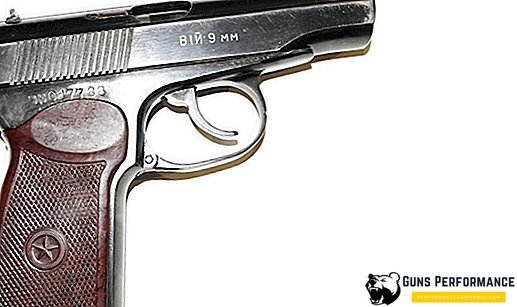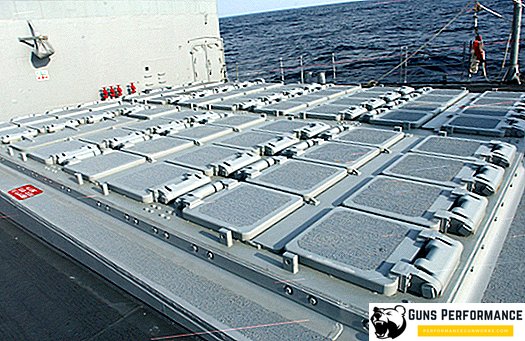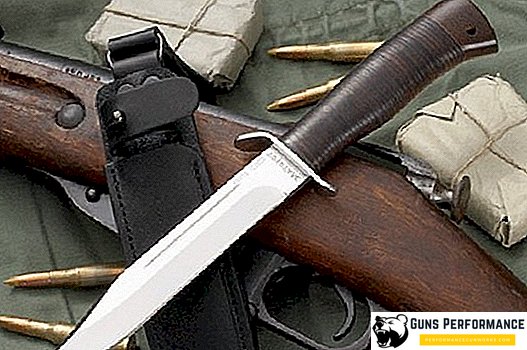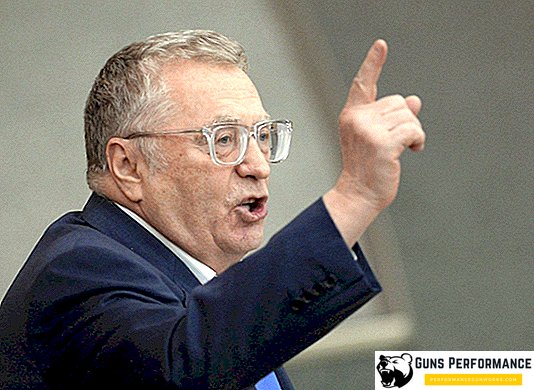The Stechkin automatic pistol (APS) has been developed since 1948 by engineer Igor Yakovlevich Stechkin. The first prototype was released in 1949. A feature of the pistol is the ability to fire from it by single shots, and in automatic fire mode. The gun passed tests for 2 years, was repeatedly refined, improved, and was adopted for service in 1951.

Advantages of the design
APS was developed as a regular weapon of combat officers, sergeants and privates, car crews, which according to the regulations did not rely rifles or carbines. The pistol had a number of advantages compared with the Makarov pistol produced at that time — a longer barrel, the ability to fire in automatic mode and an enlarged magazine, while the holster-butt-butt allowed us to conduct aimed fire at significant distances.
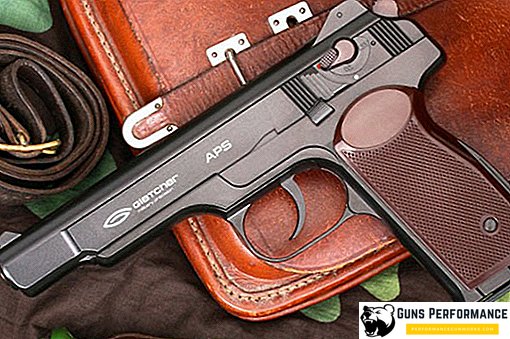
disadvantages
There was a pistol and a number of disadvantages, which include:
- the large weight and bulkiness of the pistol even without a holster butt, which makes it inconvenient to wear it constantly
- expensive production
- low accuracy of automatic fire
- a small angle of inclination of the handle, which made shooting uncomfortable with a pistol without thinking.
These shortcomings caused the APS to be discontinued in 1958, although it remained in service even a few decades later.
In the 1970s, the Modern contest was held, the purpose of which was to find a small-sized machine that would serve as a replacement for the APS. They became automatic AKS-74U.
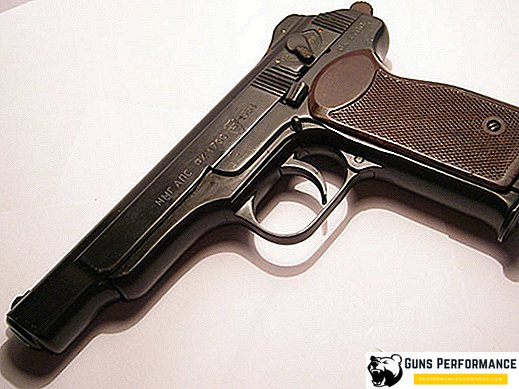
Gun device
APS consists of the following parts:
- Trunk - the channel inside the barrel has 4 grooves going clockwise
- Pistol frame consists of the following parts:
- base of the handle
- barrel holder
- trigger hooks and staples
- cutout for shop clips
- hairpin
- tide
- shutter latch cutout
- antabka
- jumper
- Trigger guard - a separate part
- Gate - consists of:
- sight
- window
- flies
- groove
- trigger slot
- channel
- longitudinal guides
- through cross hole
- Return mechanism - spring placed on the trunk.
- Mechanism for removing spent cartridges - consists of the ejector, ejector spring, ejector stopper and reflector.
- Feeder - consists of the filling of cartridges.
- Score - consists of a body, a feeder, a spring, and a cover for the magazine. Stechkin used a rather rare shop structure - a two-row one. Cartridges in it were arranged in chess order. The development of such a system required effort, but the result was just awesome. Even in our time, manufacturers of pistols rarely use such a structure of the store, preferring a simpler single-row structure.
- Trigger mechanism Includes the following parts:
- trigger
- action spring
- drummer
- shop pin
- cartridge pusher
- trigger with trigger
- disconnector
- whispered
- The mechanism of slowing down the shooting - includes a moderator spring, a moderator, a transmission lever
- Fuse is one piece with a complex structure. Also serves as a firing mode switch.
- Sighting mechanism - consists of a fly and sight
- Holster butt - although it is not a component part of the gun, it was still bundled with each device.
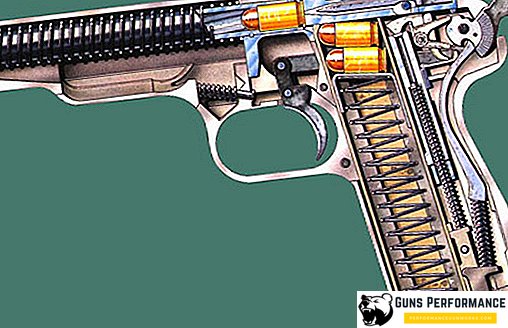
Tactical and technical characteristics APS
- Caliber - 9 mm
- Weight:
- 1 02 kg - without ammunition and holster-butt
- 1 22 kg - with ammunition, without holster-butt
- 1.78 - with ammunition and holster-butt
- Rate of fire:
- 40 shots per minute - when shooting single shots
- 90 shots per minute - when firing a burst
- Store capacity - 20 rounds
- Length:
- 225 mm. without holster butt
- 540 mm. with holster butt
- Barrel length - 140 mm
- Height - 150 mm
- Operating principles - free shutter
- Initial bullet speed - 340 m / s
- Sighting range - 200 m
- Type of chamber - two-row magazine for 20 rounds
- The sight is an open drum type.
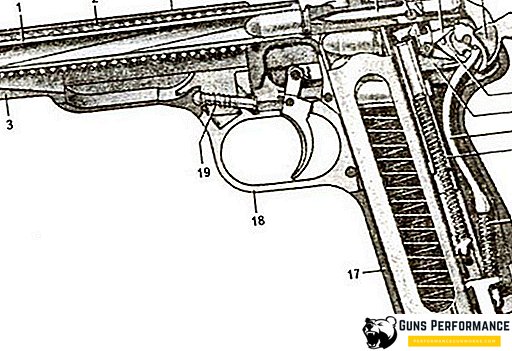
Review of modifications
Despite the fact that the production of APS was discontinued in 1958, a number of modifications were developed and released:
- Gun APB (or AO-44) - a version of the weapon with a silencer. It was developed in the early 1970s and adopted in 1972. Widely used during the war in Afghanistan
- APS-M - a traumatic pistol chambered for 10x22 mm. Has the ability to fire rubber bullets. Removed the possibility of shooting in automatic mode, the volume of the store is reduced to 10 rounds. The gun is available to this day.
- MP-355 - a traumatic pistol chambered for 9 mm
- Umarex APS - 4,5 mm air gun
- Gletcher APS - air gun with a weight and external characteristics of an identical APS and a movable bolt, caliber 4.5 mm
- Gletcher APS-A - air gun with a weight and external characteristics identical APS and a movable bolt, 6 mm caliber.

Exploitation
APS was in service in the following countries: USSR, Russia, Ukraine, Bulgaria, Belarus, Armenia, Kazakhstan, the Federal Republic of Germany (Germany). The Stechkin pistol is still used by some special military departments.
The combat APS was also delivered to other countries as gifts for high-ranking officials (for example, Stechkin pistols were Che Guevara’s and Fidel Castro’s personal weapons) and large batches. These were mainly deliveries to countries friendly to the USSR — Angola, Libya, Mozambique, and others.
After the collapse of the USSR, the Stechkin automatic pistol was used during the military conflict in Chechnya.
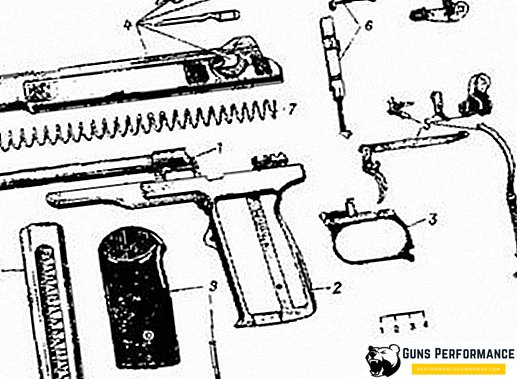
Disassembly and assembly of the device
Incomplete disassembly
- store removal
- trigger guard compartment
- removing the bolt from the gun
Stage full disassembly gun
- incomplete disassembly of weapons
- return of the trigger guard to the standard position
- uncocking
- separation of the cheek from the base of the handle
- branch of the transferring lever, having pressed a reflector aside
- removing the end of the spring whispered with a slide delay, drowning the retarder
- to separate the whisper
- retarder compartment with spring and guide rod
- store latch compartment with pusher and spring
- branch of the trigger, pre-squeezed trigger pull
- separation of the trigger guard from the frame
- separation of the trigger along with the trigger up
- separation of the translator fuse from the shutter
- separation of the hammer from the gate
- separation of the ejector from the valve
- disassembly store.
The device is assembled in the same reverse order.




